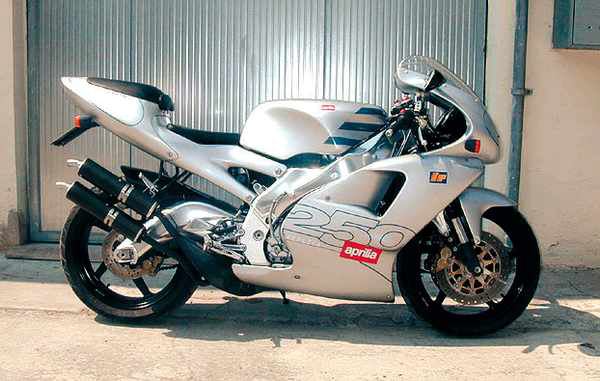Twelve years have elapsed since motorcycles filled the spiral of the
Guggenheim museum in New York (1998), and two-wheelers have yet to see full acceptance within the Fine Arts/Fine Design establishment. While the
'Art of the Motorcycle' show remains that museum's second-highest-attended exhibit, it was considered something of a populist sell-out at the time, especially as it pioneered an 'interested sponsor' relationship with
BMW (although little discussion was published about 'named' sponsorship in general). Few critics defended the
Guggenheim's Thomas Krens for hosting a major motorcycle exhibit on hallowed Art turf, unless of course they happened to be motorcyclists themselves. Even then, the level of discourse around Motorcycles and Culture generally bordered on flippant, unless the mood was outrage. The 'Art of the Motorcycle', imperfect as it may have been, was a vital first effort at establishing motorcycles as important within a broader dialogue on Design and Culture.
The upcoming sale of the prototype 1925 Brough Superior SS100 'Alpine Grand Sports' at
Phillips de Pury, is the first instance post-AotM of a motorcycle's inclusion in a major Art or Design auction. As such, it represents a shift in attitude within the Fine Arts auction establishment, which has been brewing for 12 years. The closest we've come thus far was in June of 2009, when an ex-Steve McQueen 1929 Scott Flying Squirrel, painted by 'Von Dutch', was auctioned at
Antiquorum in New York, within a sale of
celebrity-owned watches and memorabilia. The Scott fetched $276,000, double its estimate and SIX times what it had sold for less than two years prior, in 2007 at the
Bonhams Petersen Museum sale that October ($44,460). Interestingly, the Petersen sale included considerable McQueen and Von Dutch memorabilia as well, but failed to attract the results of the
Antiquorum sale. Begging the question...was the Antiquorum clientele so significantly different than
Bonhams', or had the market for magical Steve McQueen talismans suddenly gone mad? Considering that June 2009 was a troubling time in the global economy, and a moment generally of weakening collectible sales, I have to conclude that Antiquorum has an audience with far deeper pockets. A specialist in fine watches, they hold the record for a wristwatch sale at auction; a unique white gold
Patek Philippe which sold for just over $5M (They are also notorious for
selling Gandhi's pocket watch, sandals, glasses, and bowl for over $2M). If a
wristwatch can sell for so much, can such an esteemed motorcycle be far behind?
When asked why he chose to include his SS100 in the
Phillips de Pury auction, the current owner stated, 'I've been wanting to do this for years; Broughs have far transcended their original purpose as a motorcycle, and should be included in a major Design sale. I've known
Marcus Tremonto for years, he is the absolute expert on 20th Century Decorative Art and Design... I wish I knew as much as he's forgotten! Phillips has an fabulous new facility on 57th and 5th in Manhattan, and their last big Art sale totalled $137M, so this auction should be quite something. If nothing else, it will give everyone something to think about. Friends say 'if it fails to sell, the bike will be tarnished', but that's rubbish...if the Brough falls on its face, it will stay at my house. Eventually it will ring the bell.'
Phillips de Pury is bolstering inclusion of the Brough in their
'Design Masters' sale with fully 10 pages of lavish photographs, more than double the visibility granted other Design greats in the catalog:
Le Corbusier,
Jean Prouvé,
Robert Mallet-Stevens, etc. The Alpine Grand Sports is the highlighted feature of the sale, and nearly double the nearest sale estimate, $350,000 for a
Marc Newson futuristic aluminum '
Orgone stretch lounge' of 1993. Clearly, Phillips is banking heavily that the time is ripe to place
George Brough within the pantheon of all-time great Designers.
A serious re-appraisal of Motorcycles within our capitalist society will of course include a fight for ownership of the agreed 'finest' examples. These are the rarest of the rare, and the
pattern has already been established within the motorcycling community itself. Just as with paintings or other Design items, the notion of an object's 'value' is intimately connected with its sale price, and as the eyes of well-heeled Art collectors turn towards two wheels, there will be a serious rise in prices for significant racing machines and legendary road bikes. It is inevitable.

Dedicated motorcyclists who covet rare machines will decry the continuing trend of top-tier machines floating away from the reach of their checkbooks. Yet, even with waves of speculation during the past two 'bubbles' of the 1980s and 2000s, the price of excellent but relatively high-production bikes has remained under $30,000; affordable, if not cheap... the price of a new all-options Harley Davidson. The cost of a restored 1969 Triumph Bonneville will continue to reflect more on the labor and quality of the restoration, than on wild excesses of a speculator's market...at least while the economy is depressed. As time passes, the relative glut of old motorcycles, versus the number of willing owners, will also conspire to keep prices of 'common' bikes moderate. Thus, we may dream of owning a Brough Superior, Crocker, or racing BMW, but will have to content ourselves with a
Matchless Model X,
Indian Chief, or
BMW R69S. Fair? Well, I'd dearly love a Rembrandt too...
Photos:
Top; Francis Dixon and George Brough prepare for the Alpine Trial of 1925.
Second; Brough, Dixon, and Eddie Meier, Austrian Brough Superior importer, Alpine Trial, 1925.
Third; former owner of 'HP2122' AGS prototype, Prince Chagla of India.
Fourth; from the Philips de Pury catalog.
Fifth; George Brough at speed during the 1925 Alpine Trial.
Last; from the Philips de Pury catalog.











































